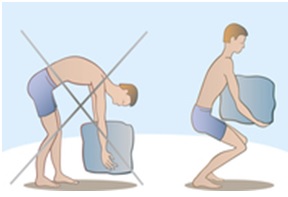The success of any species including humans is based on their ability to respond and adapt to a variety of challenges that life throws at them. Sadly in modern medicine, the approach to managing those with various illnesses, injuries or pain is to immediately limit their activities by recommending them to stop working, lifting, playing sports, taking the stairs, squatting, etc. As if that’s not bad enough, as PTs we are sometimes obsessed with telling our patients the “perfect” and the “normal” way that they should move, or else heaven forbid, they will fall apart if they move the “wrong” way or have the “wrong” posture.

The traditional reductionist approach in PT education has been that physical pain and injuries result from the failure to attain an ‘ideal’ theoretical movement pattern, which needs to be corrected for pain to go away. Which certainly makes sense in theory, but I hypothesize that our belief in the existence of an “ideal” movement can have negative consequences on our patients.
Studies have shown that people with persistent low-back pain, post ACL injuries or ankle sprain demonstrate reduced variability in their movements related to their impaired ability to adapt to external forces and unpredictable stimuli.
A person with pain in any part of their body will naturally and intuitively protect the affected body part by limiting their movement, which is quite sensible in the acute phase of injury as it will help tissue healing and recovery. However, beyond the acute phase of injury, this over-protection and the avoidance of exposure to a variety of movements and stimuli can increase the load on the injured area and likely increase symptoms and the risk of re-injury.
This reduced variability in movement is associated with reduced motor control and reduced ability to respond to unpredictable challenges.
Our primary goal as PTs must be to expose our patients to a variety of movement and load challenges in a safe clinical environment, in order to increase their capacity to respond to the challenges when they are in the real and unpredictable world.
If only we could move, play and dance like children… who rarely obsess if they’re moving in perfect alignment or not!


